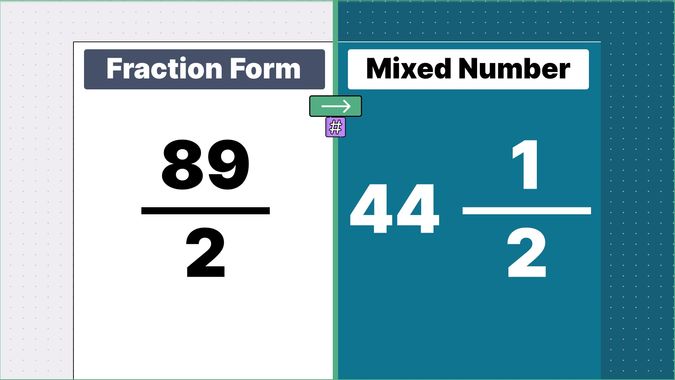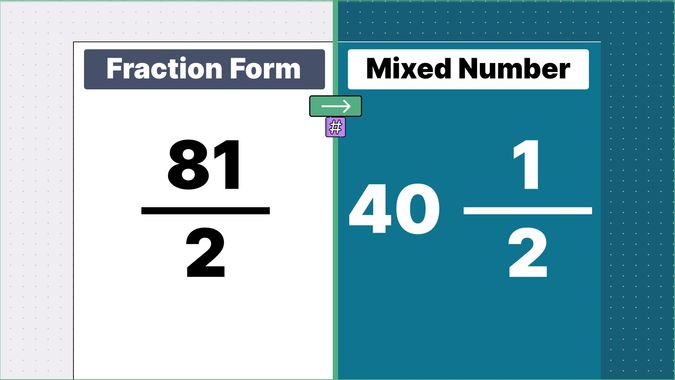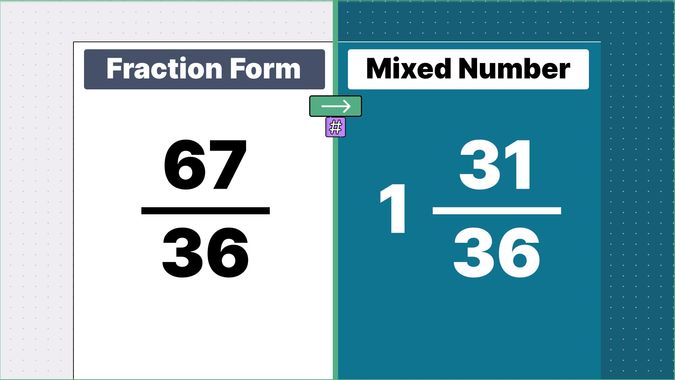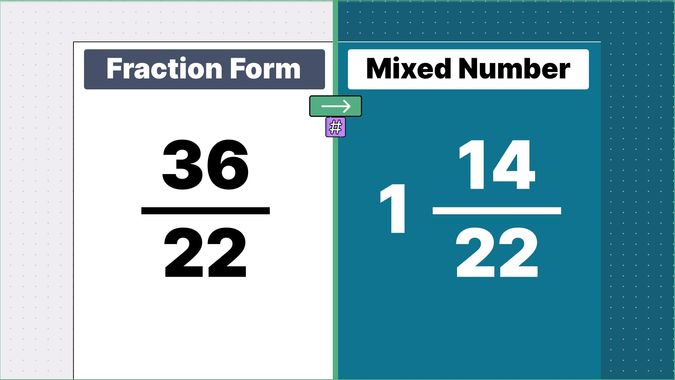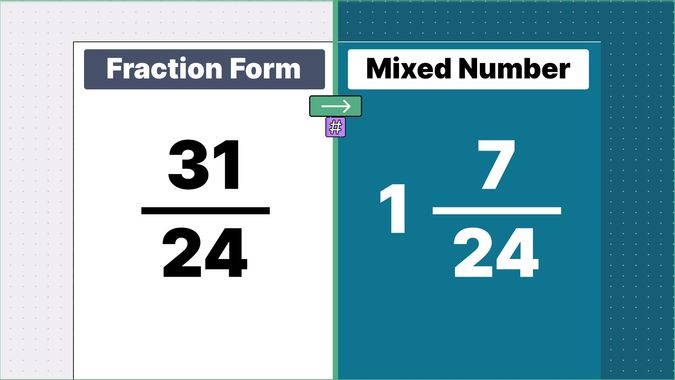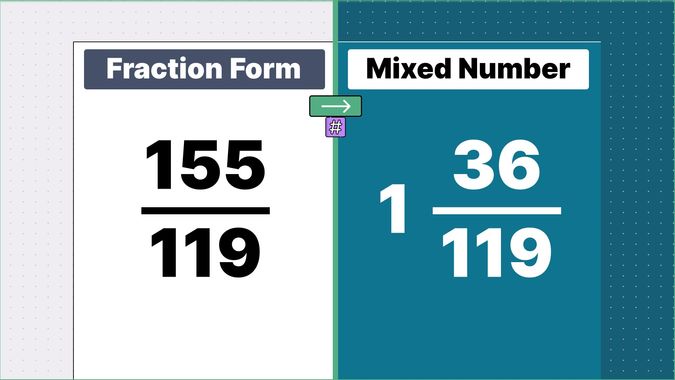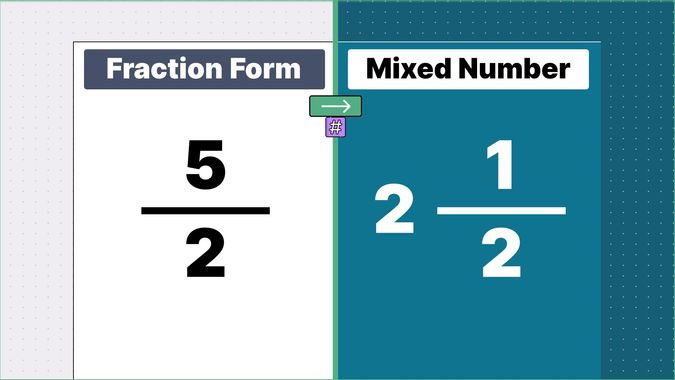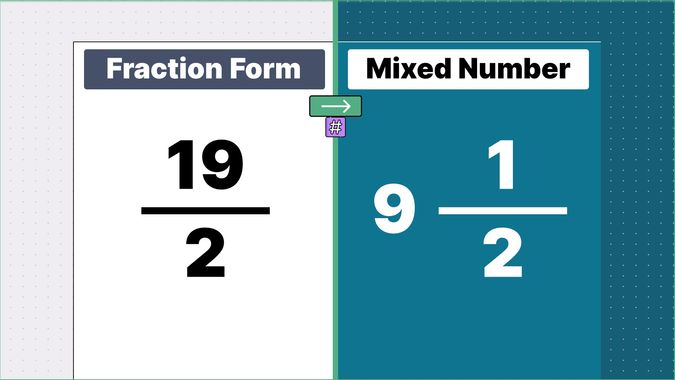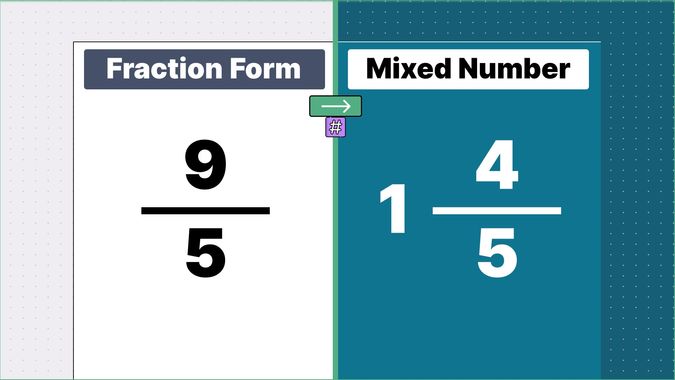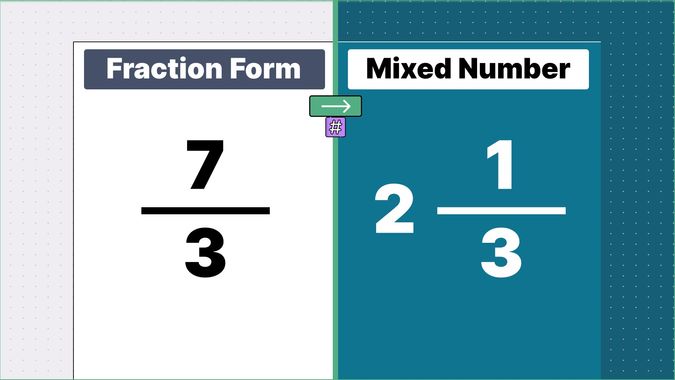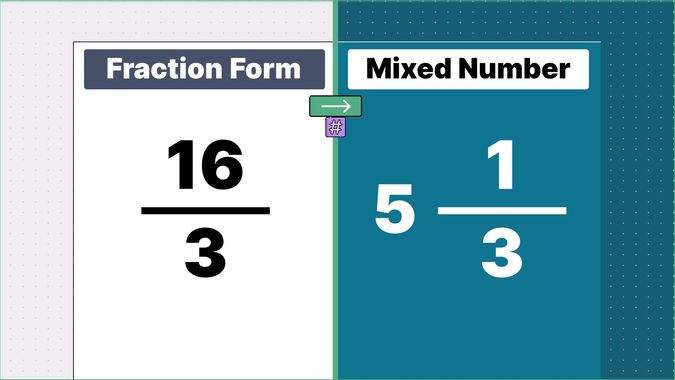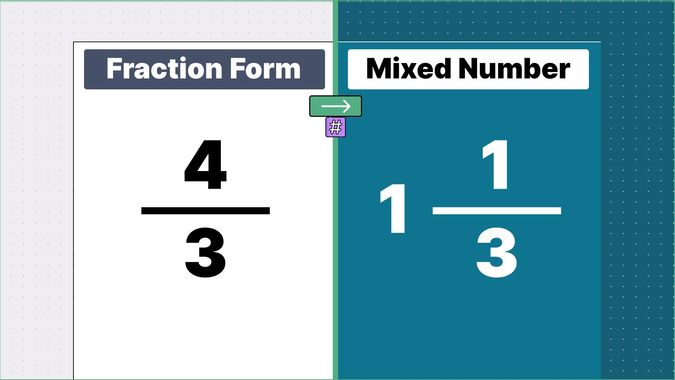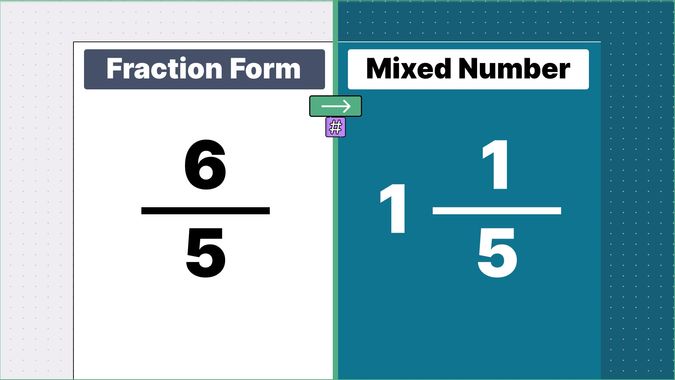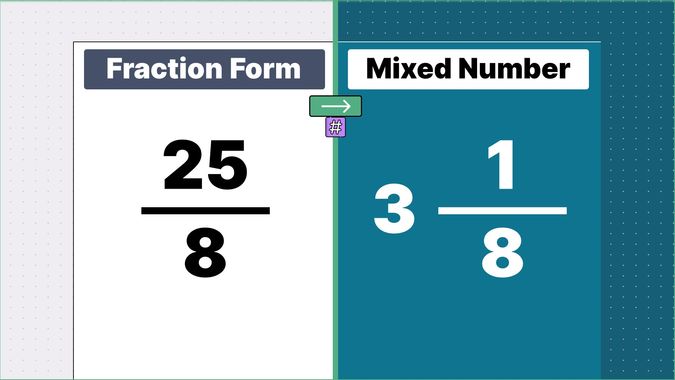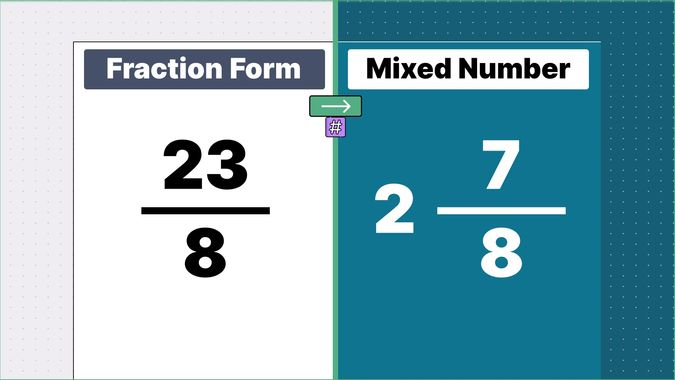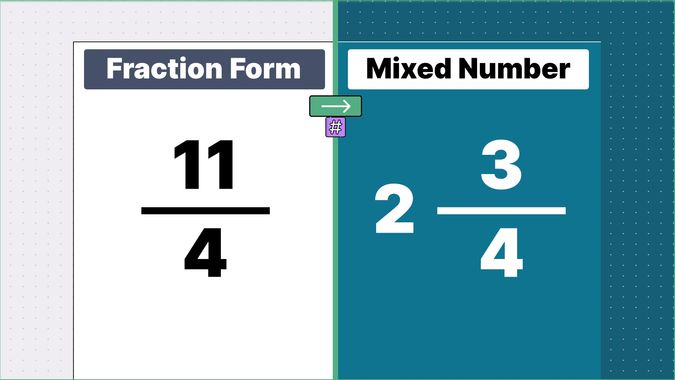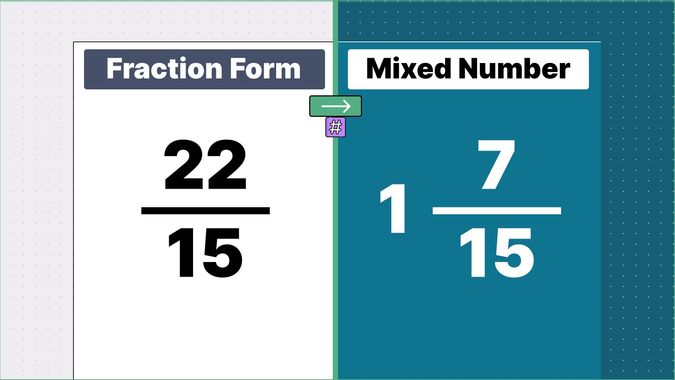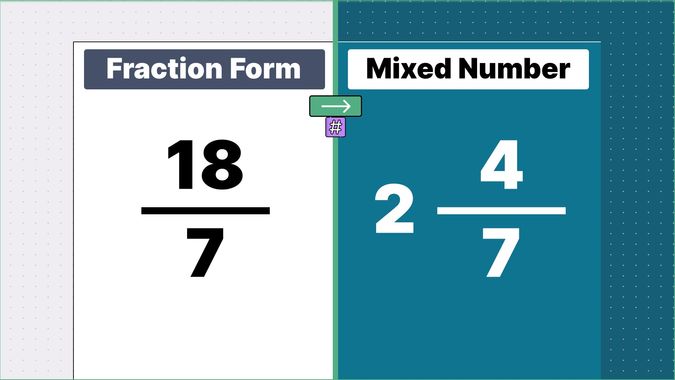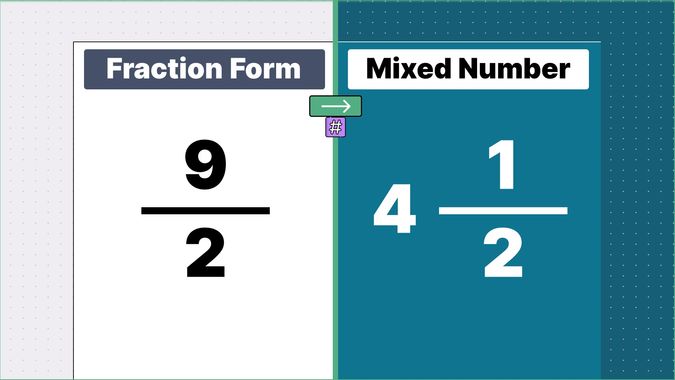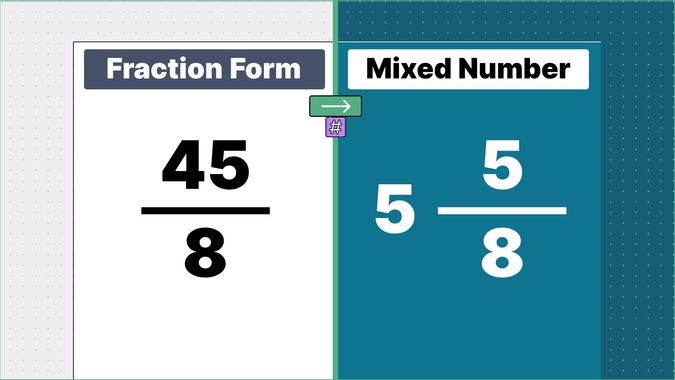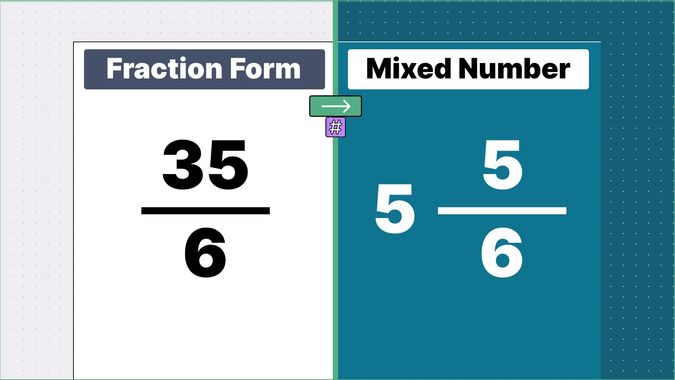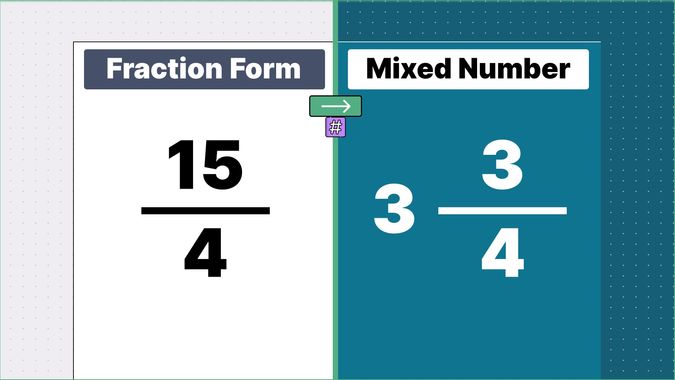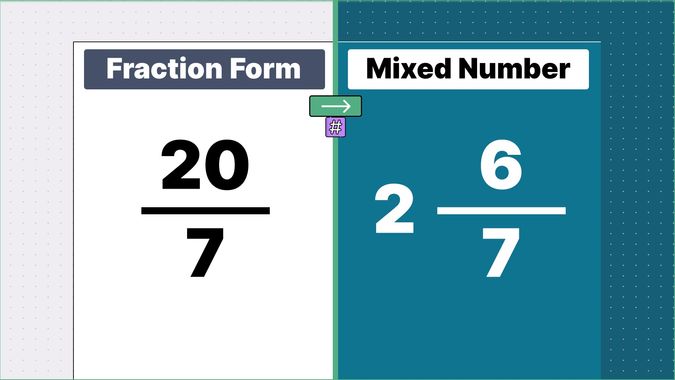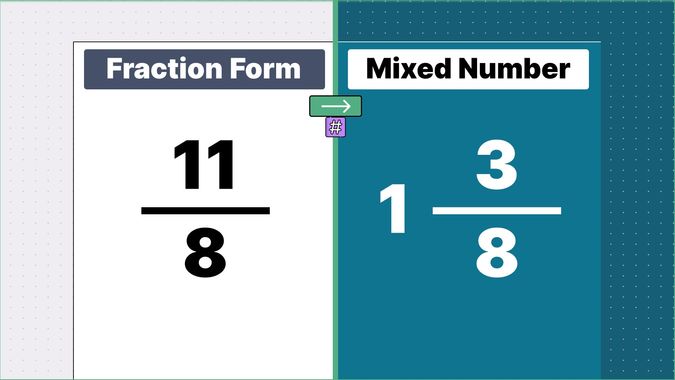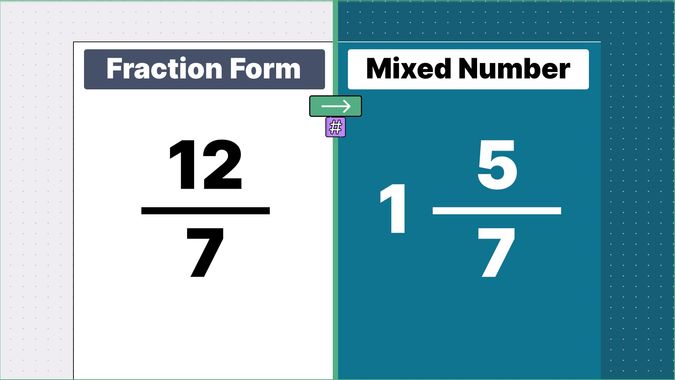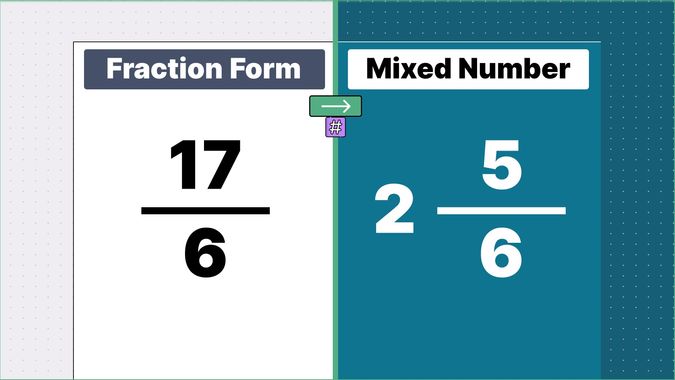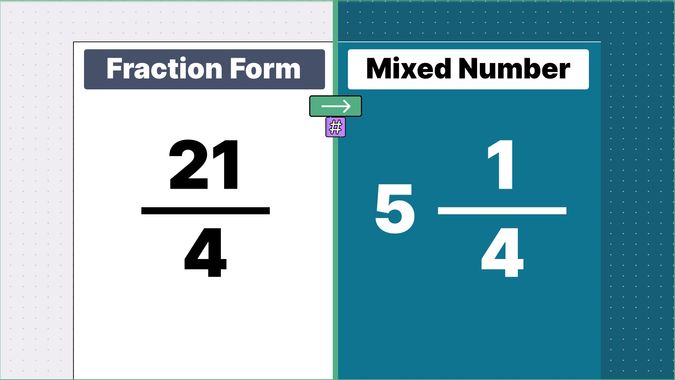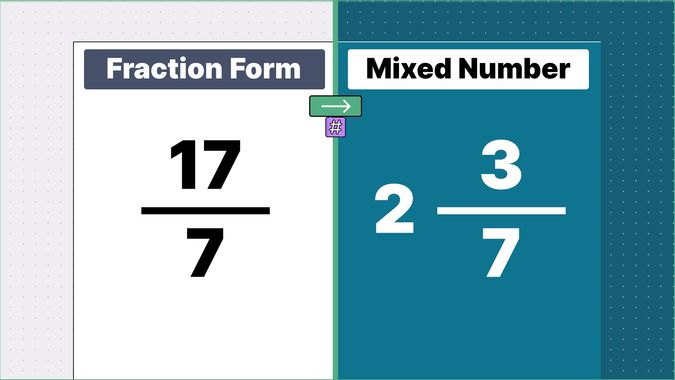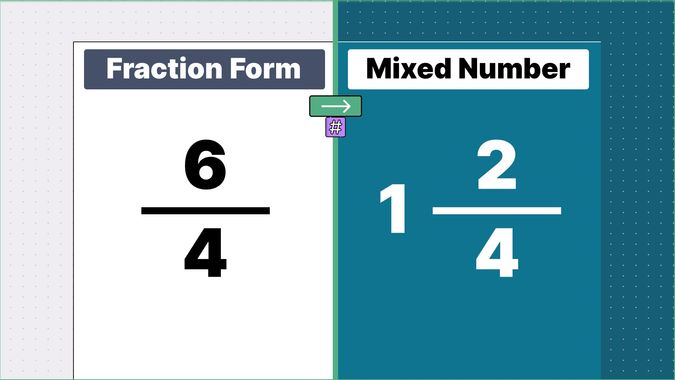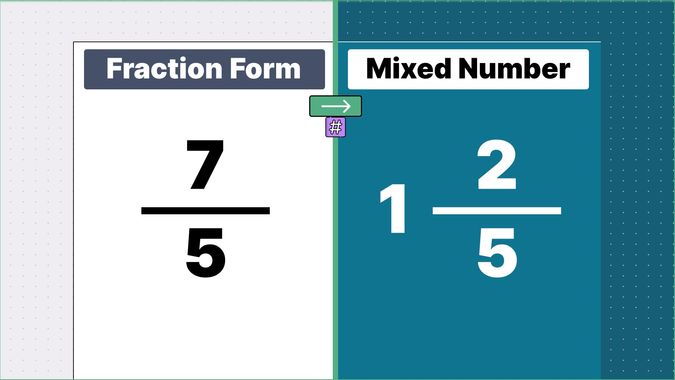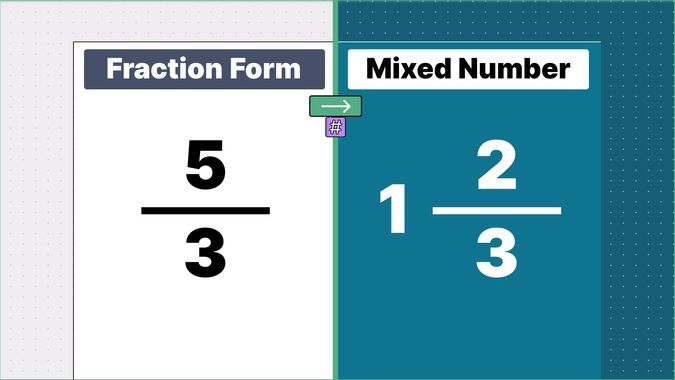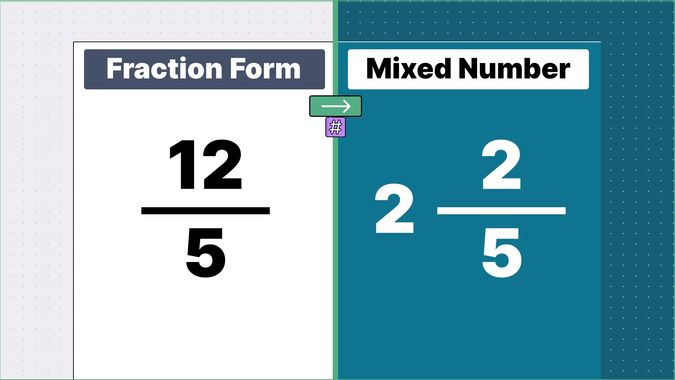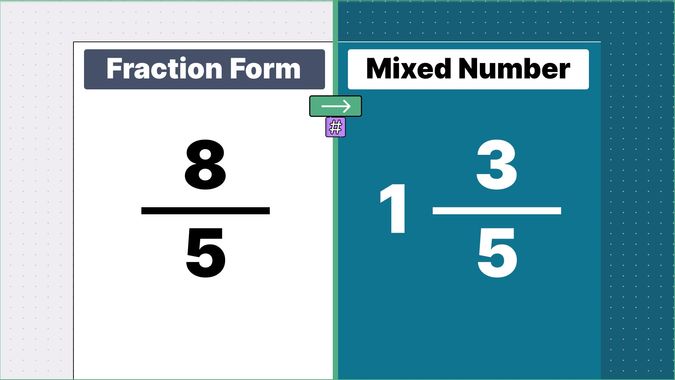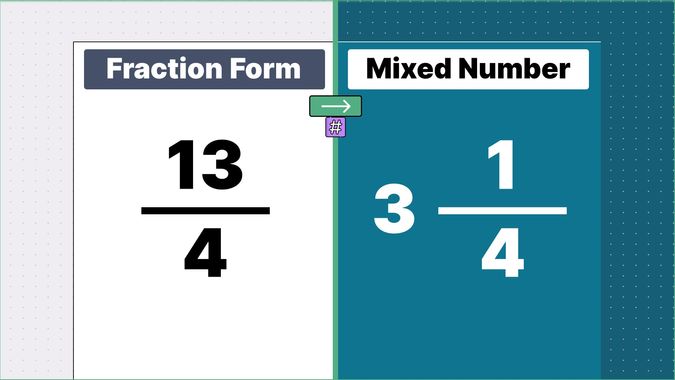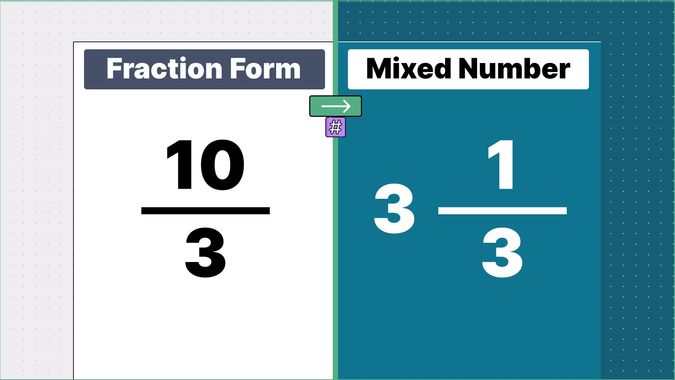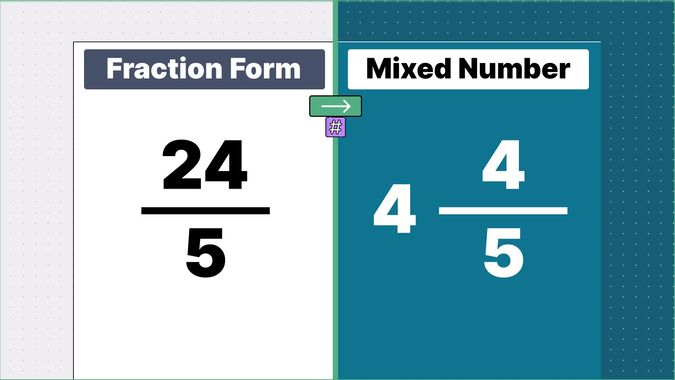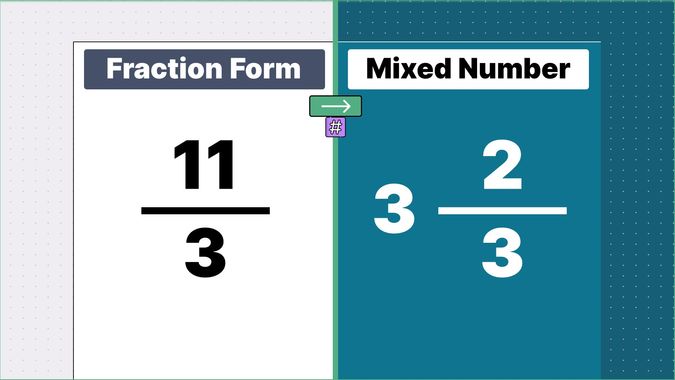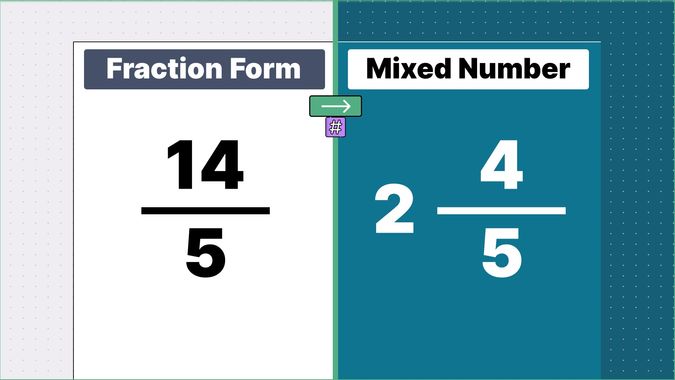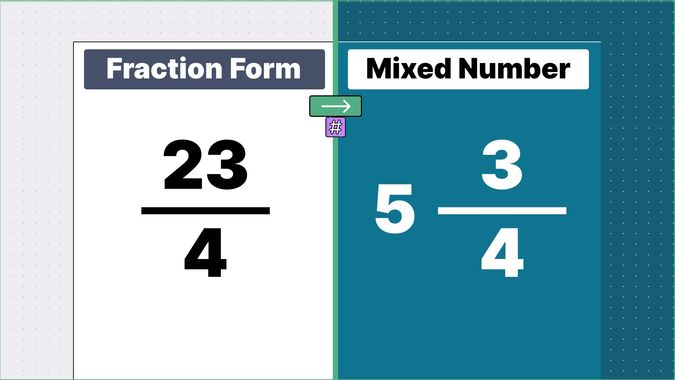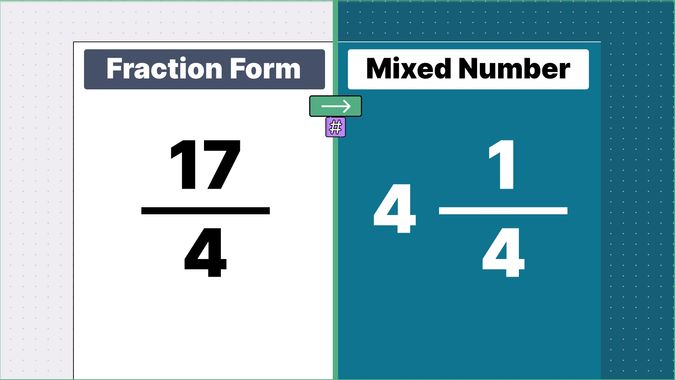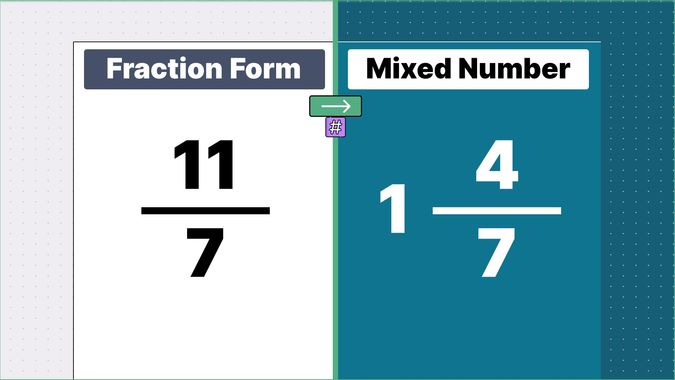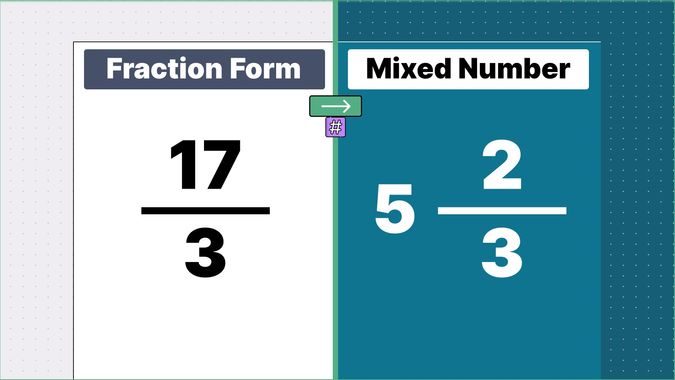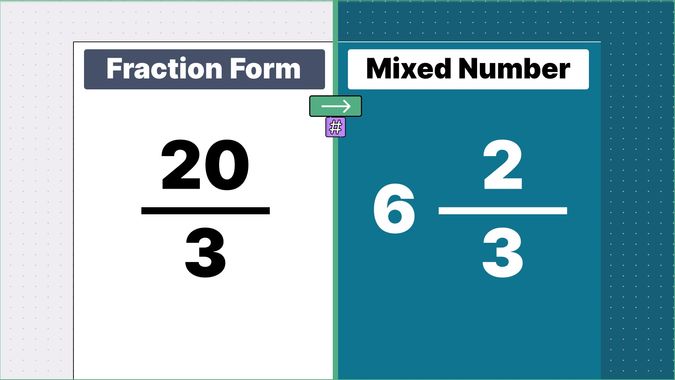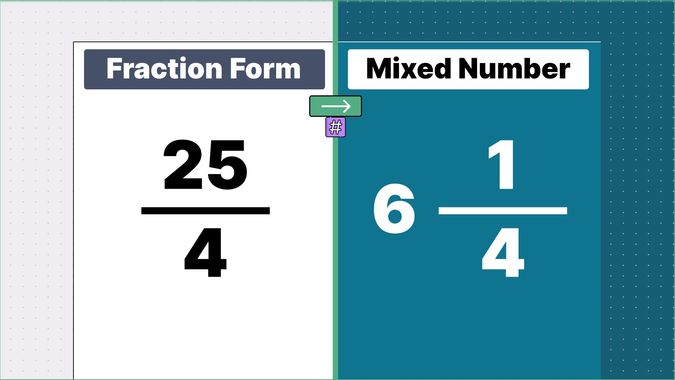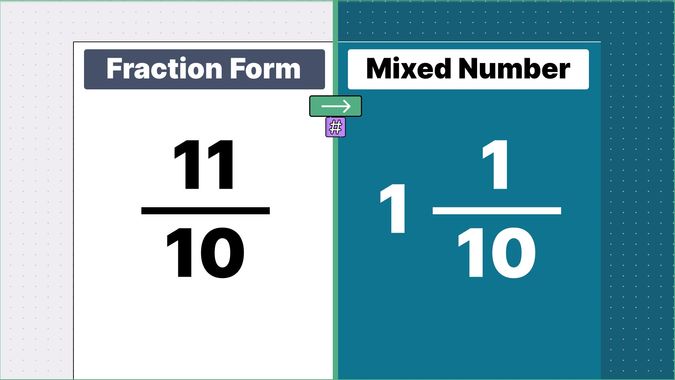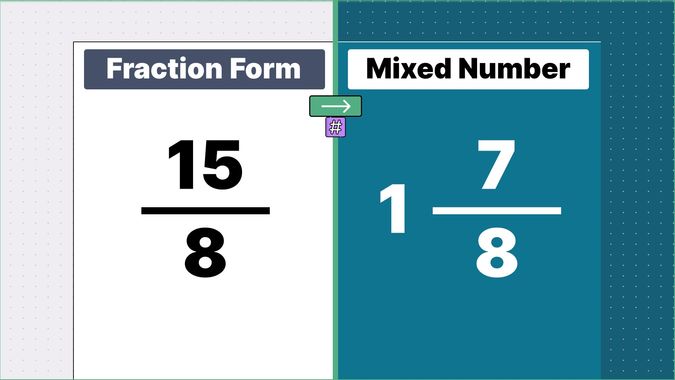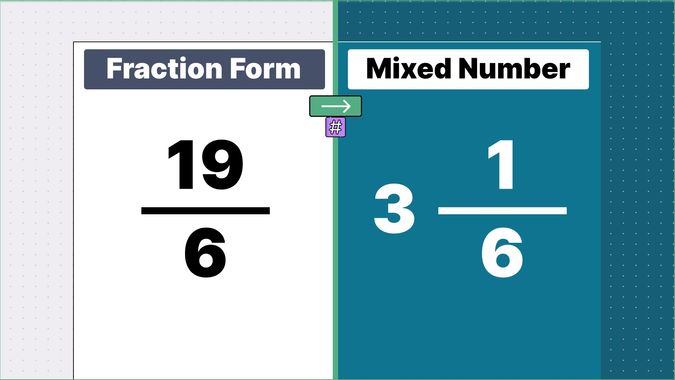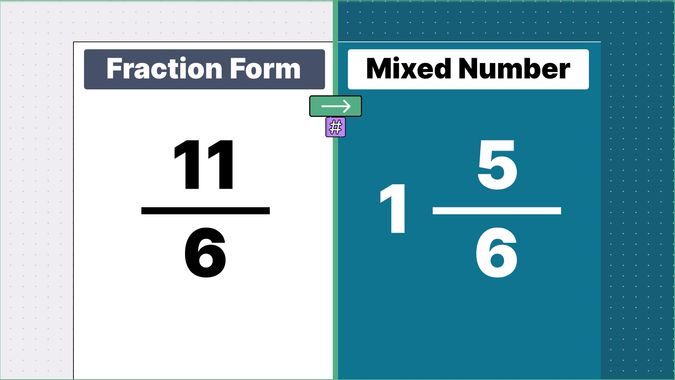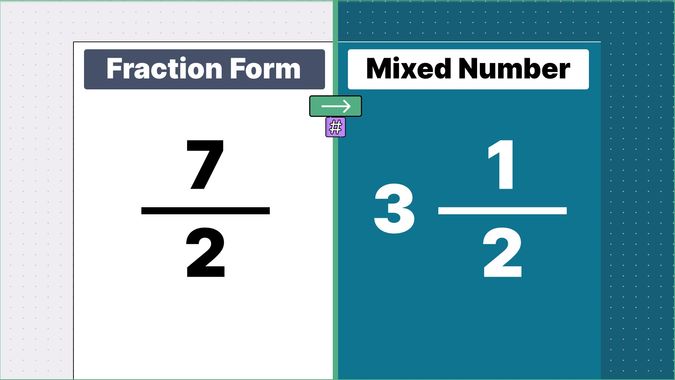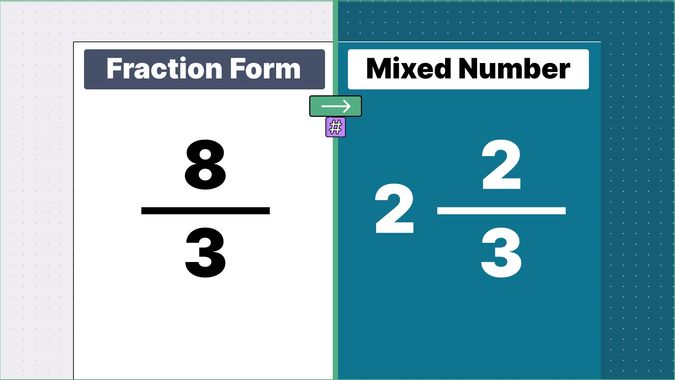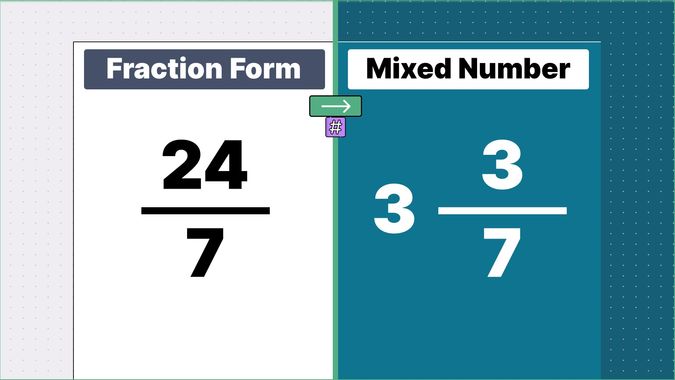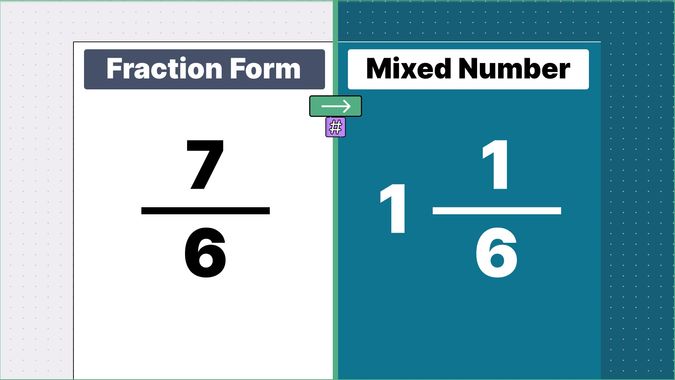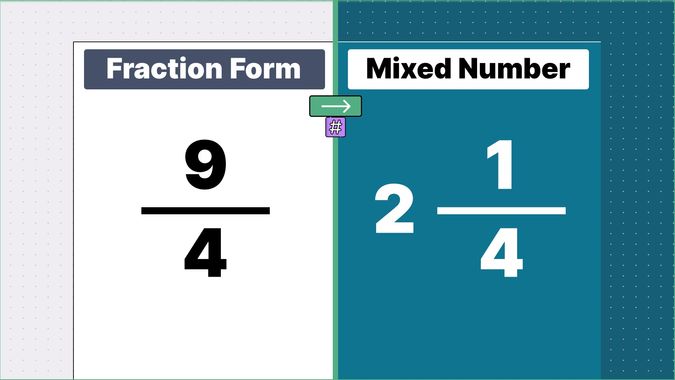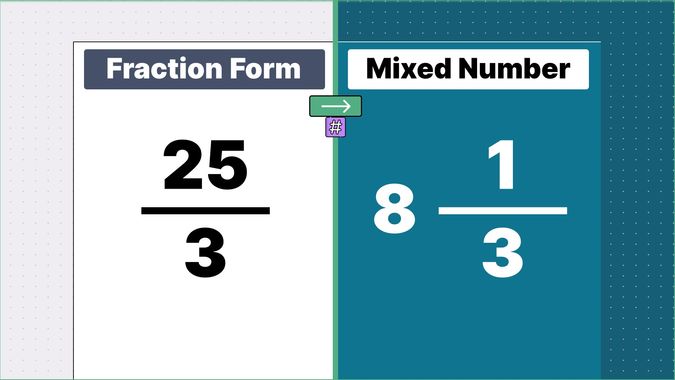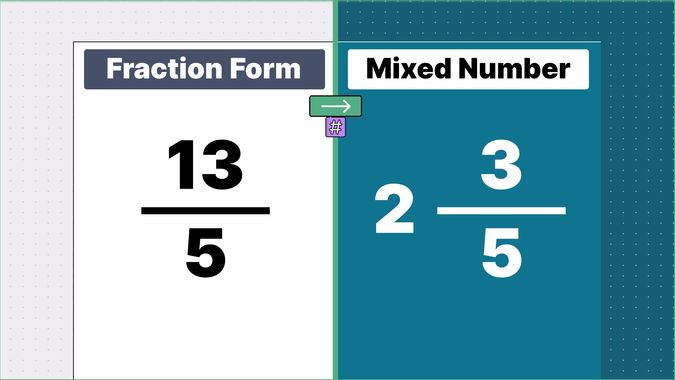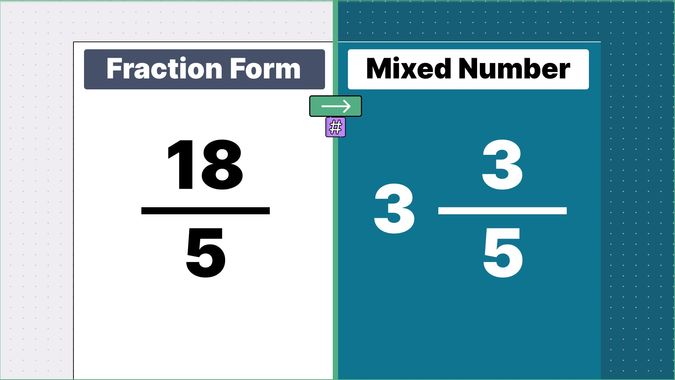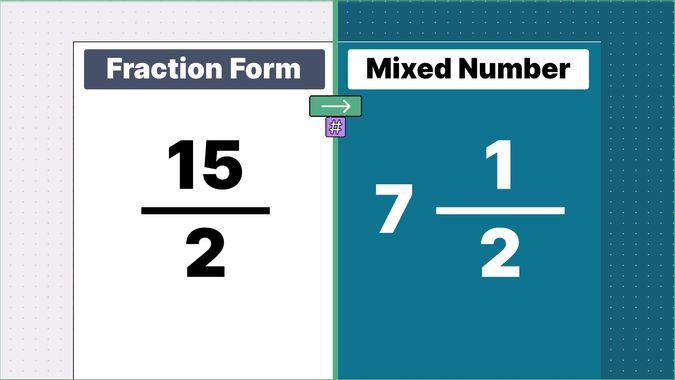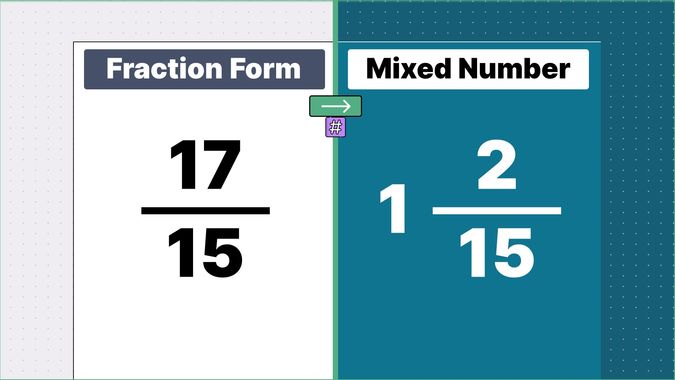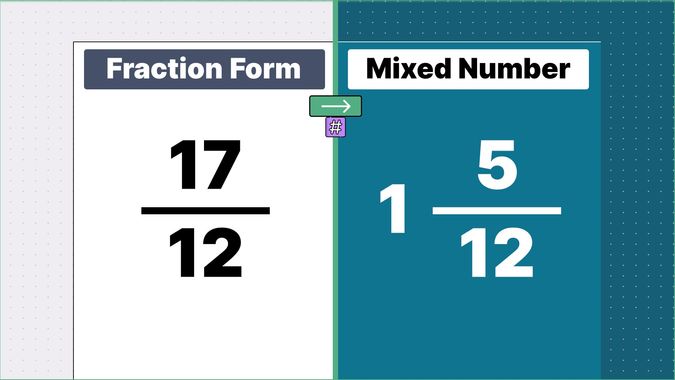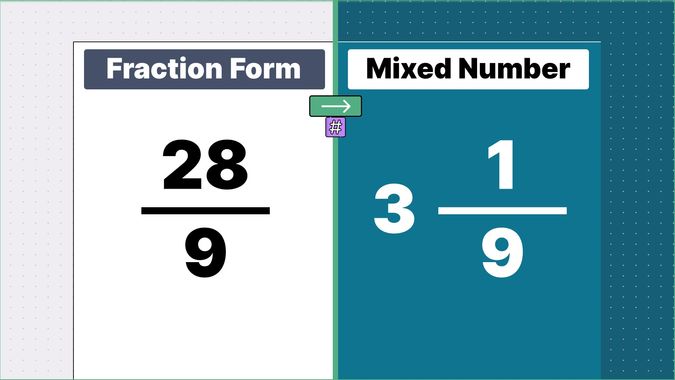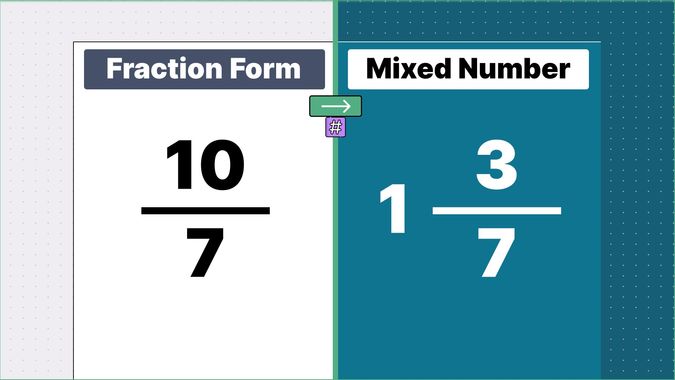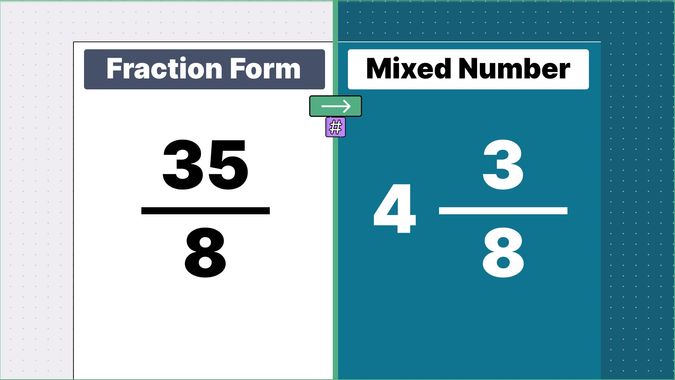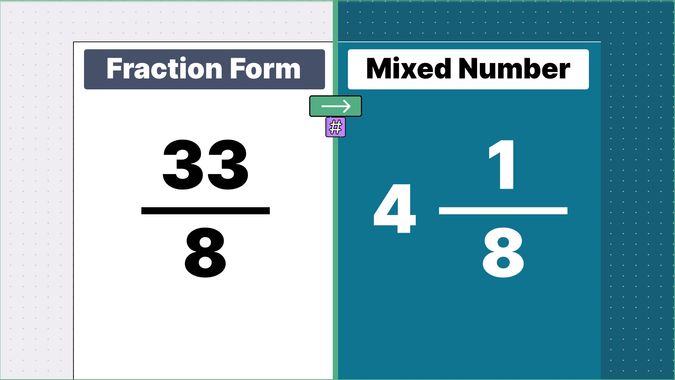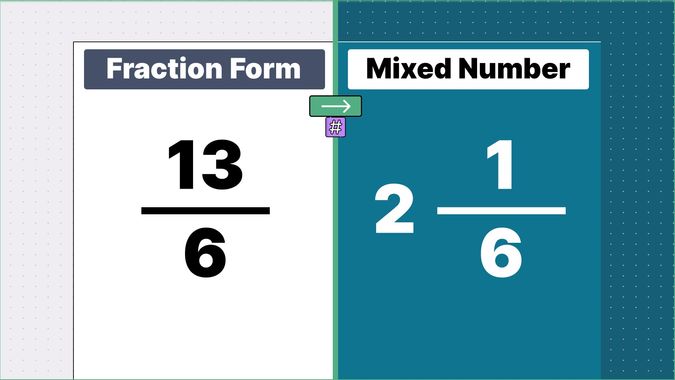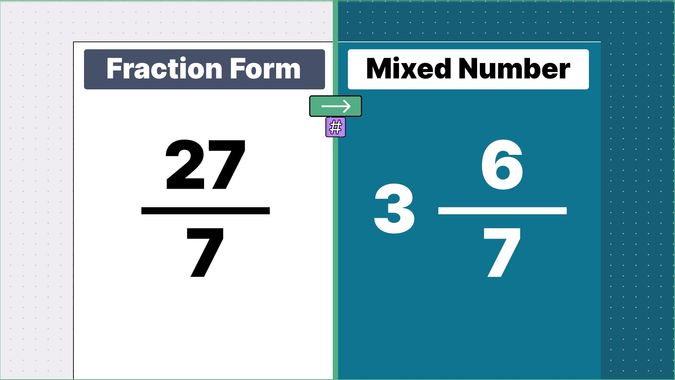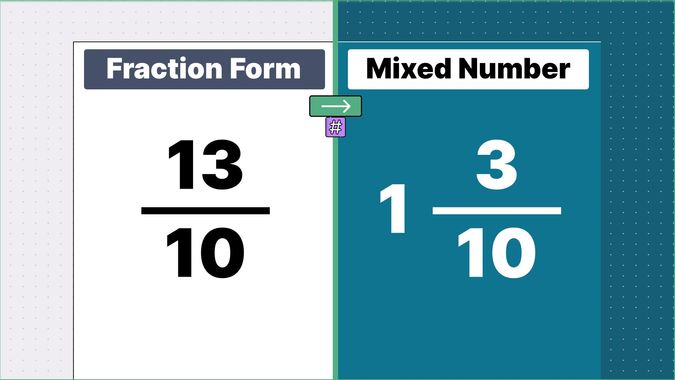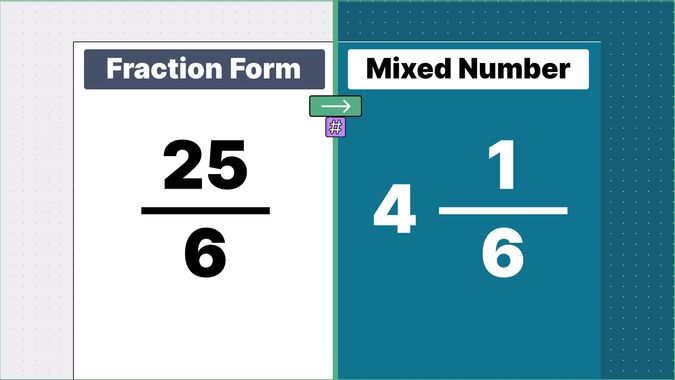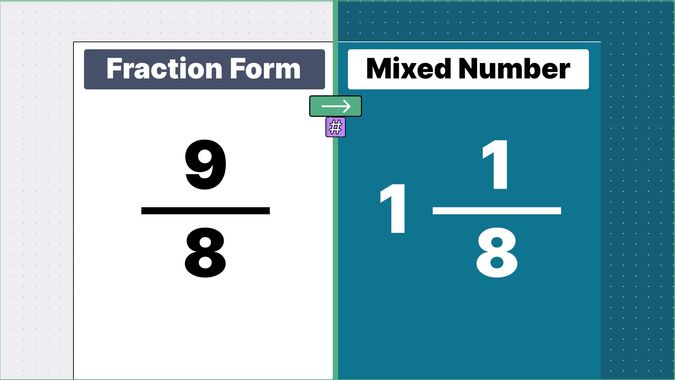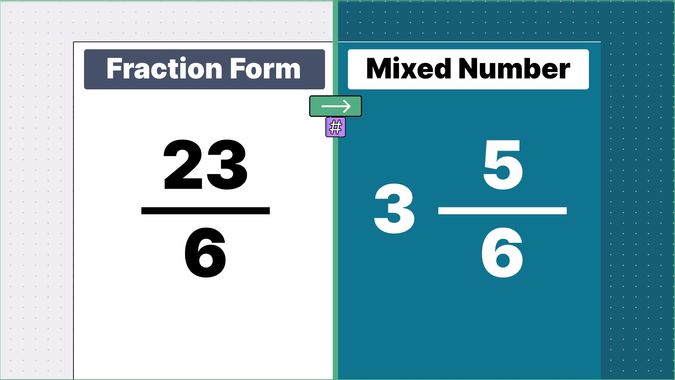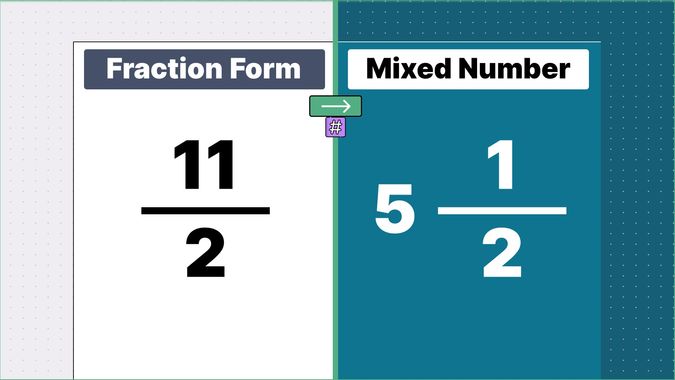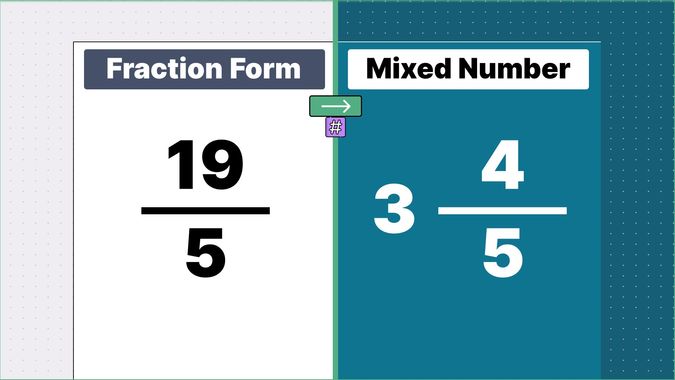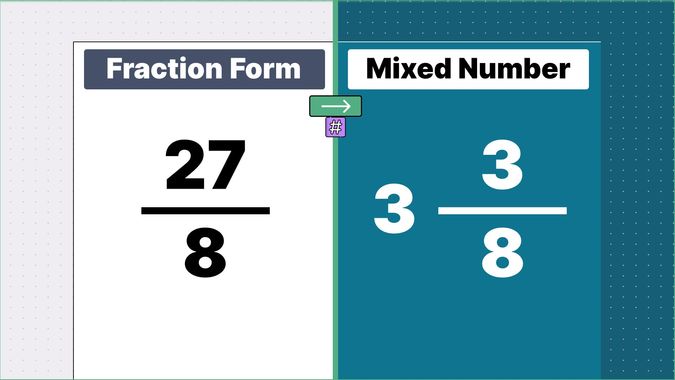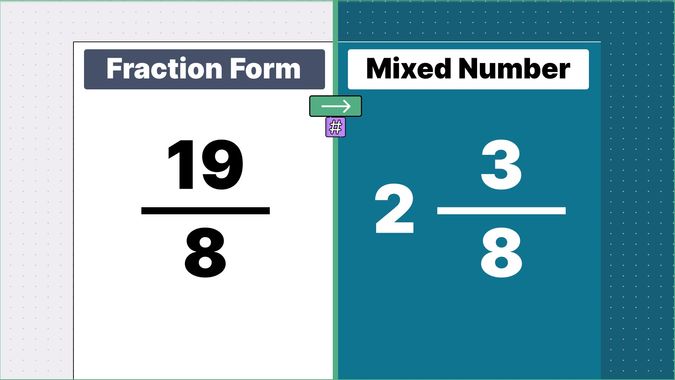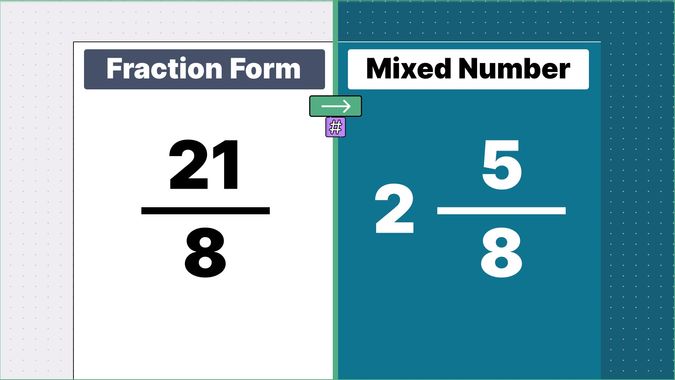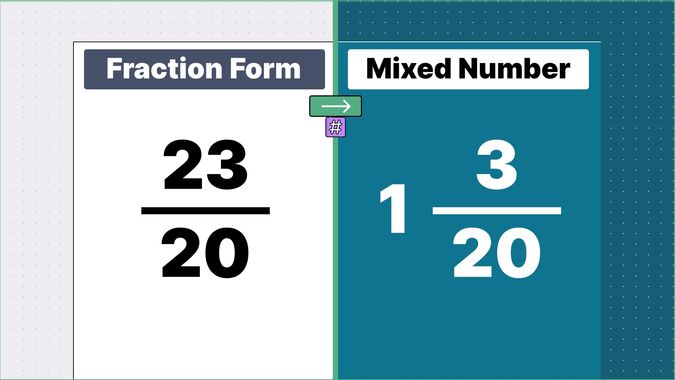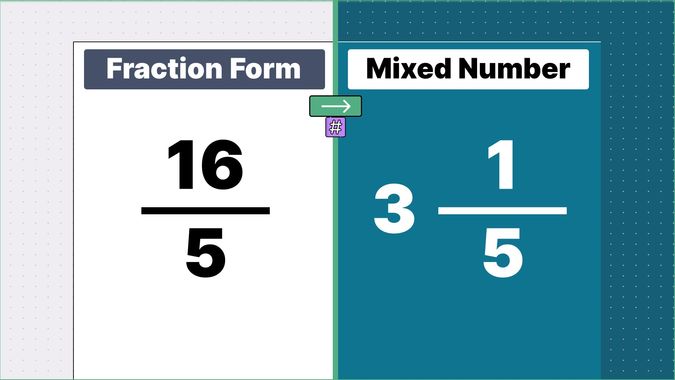
Improper Fraction to Mixed Number Converter
Enter the numerator and the denominator of an improper fraction to convert it into a mixed number:
Understanding Improper Fractions
An improper fraction is characterized by a numerator (top number) that's larger than its denominator (bottom number). Essentially, it's a fraction that represents a value greater than one.
Examples of improper fractions include:
- \( \frac74 \)
- \( \frac115 \)
- \( \frac92 \)
Decoding Mixed Numbers
A mixed number combines a whole number with a fraction, offering a more digestible representation, especially in practical scenarios.
For instance:
- \( \frac74 \) can be written as \( 1 \frac34 \)
- \( \frac115 \) translates to \( 2 \frac15 \)
- \( \frac92 \) becomes \( 4 \frac12 \)
The Importance of Conversion
There are numerous benefits to converting improper fractions to mixed numbers:
- Clarity: Mixed numbers are often easier to visualize and understand.
- Practicality: In everyday scenarios, like cooking or carpentry, mixed numbers can be more intuitive.
- Educational: For students, mastering this conversion aids in tackling complex mathematical problems.
Steps to Convert Manually
Though our tool simplifies the conversion process, it's beneficial to know the manual steps:
- Divide the numerator by the denominator.
- The quotient becomes the whole number.
- The remainder becomes the new numerator while the denominator remains unchanged.
Example:
For \( \frac74 \):
- 7 divided by 4 is 1 with a remainder of 3.
- The mixed number is \( 1 \frac34 \).
Using Our Converter
Our converter is designed to be intuitive and user-friendly. Here's a step-by-step guide on how to use it:
- Input the Numerator: In the first field, labeled "Numerator", enter the top number of your improper fraction. This is the number that's larger than the denominator in an improper fraction.
- Input the Denominator: In the adjacent field, labeled "Denominator", enter the bottom number of your improper fraction. This number represents the total number of parts the whole is divided into.
- Hit Convert: Once you've entered both values, click on the "Convert" button. The tool will instantly display the mixed number counterpart below.
For instance, if you input 7 as the numerator and 4 as the denominator, our converter will quickly provide you with the result: \( 1 \frac34 \).
For best results, always ensure your fractions are in their simplest form before conversion. This ensures accuracy and a better understanding of the results.
Other examples of fraction to mixed numbers

